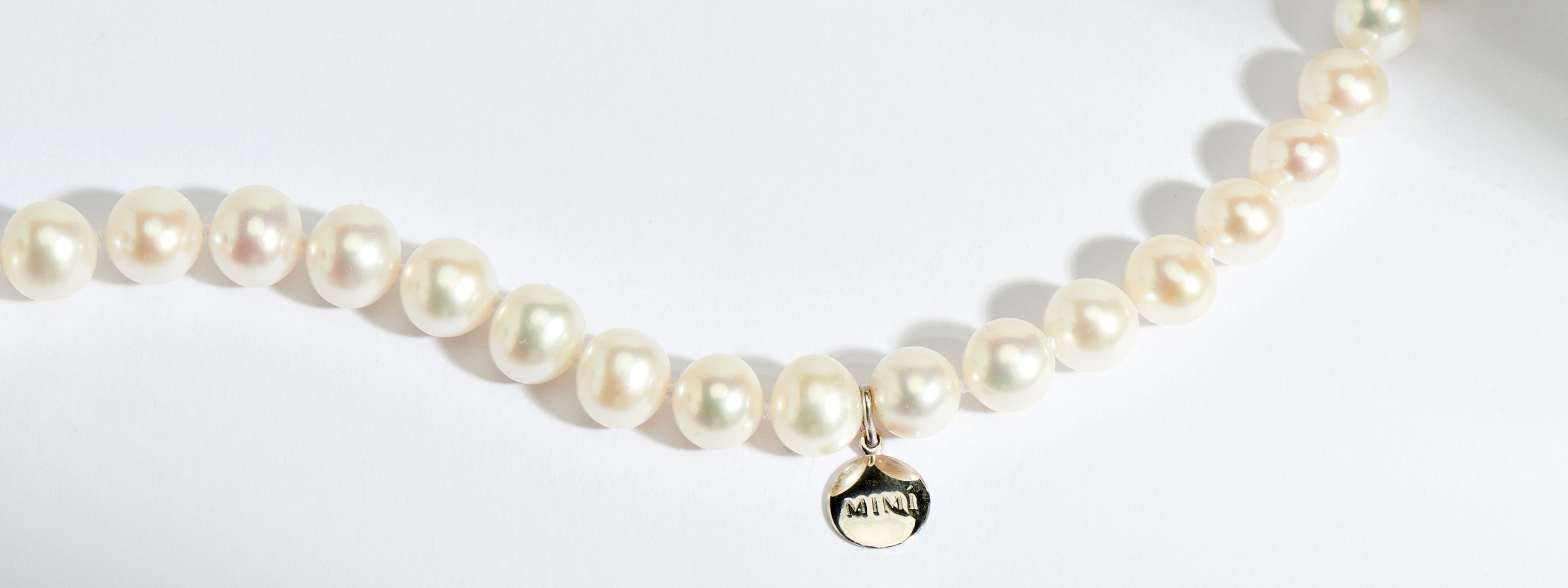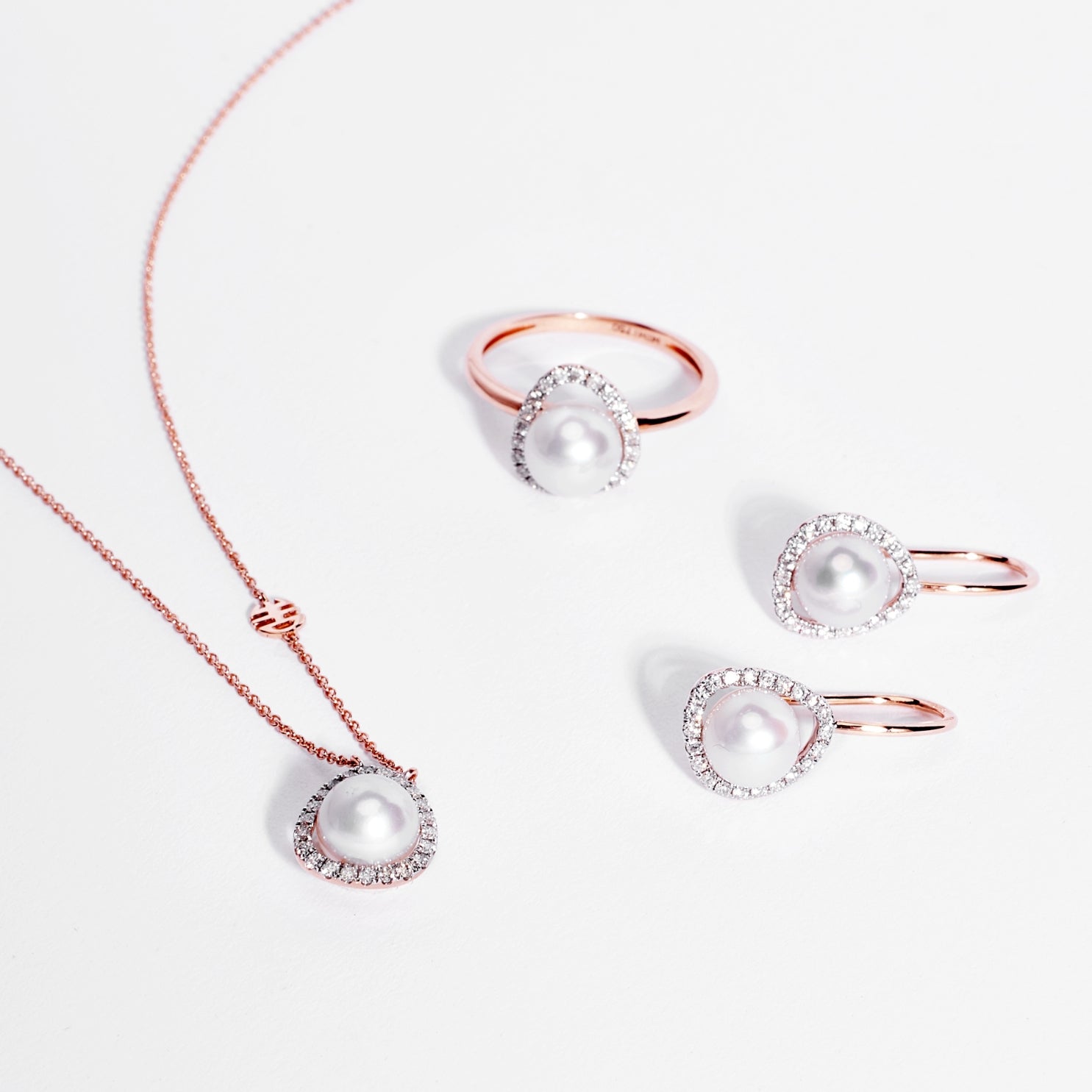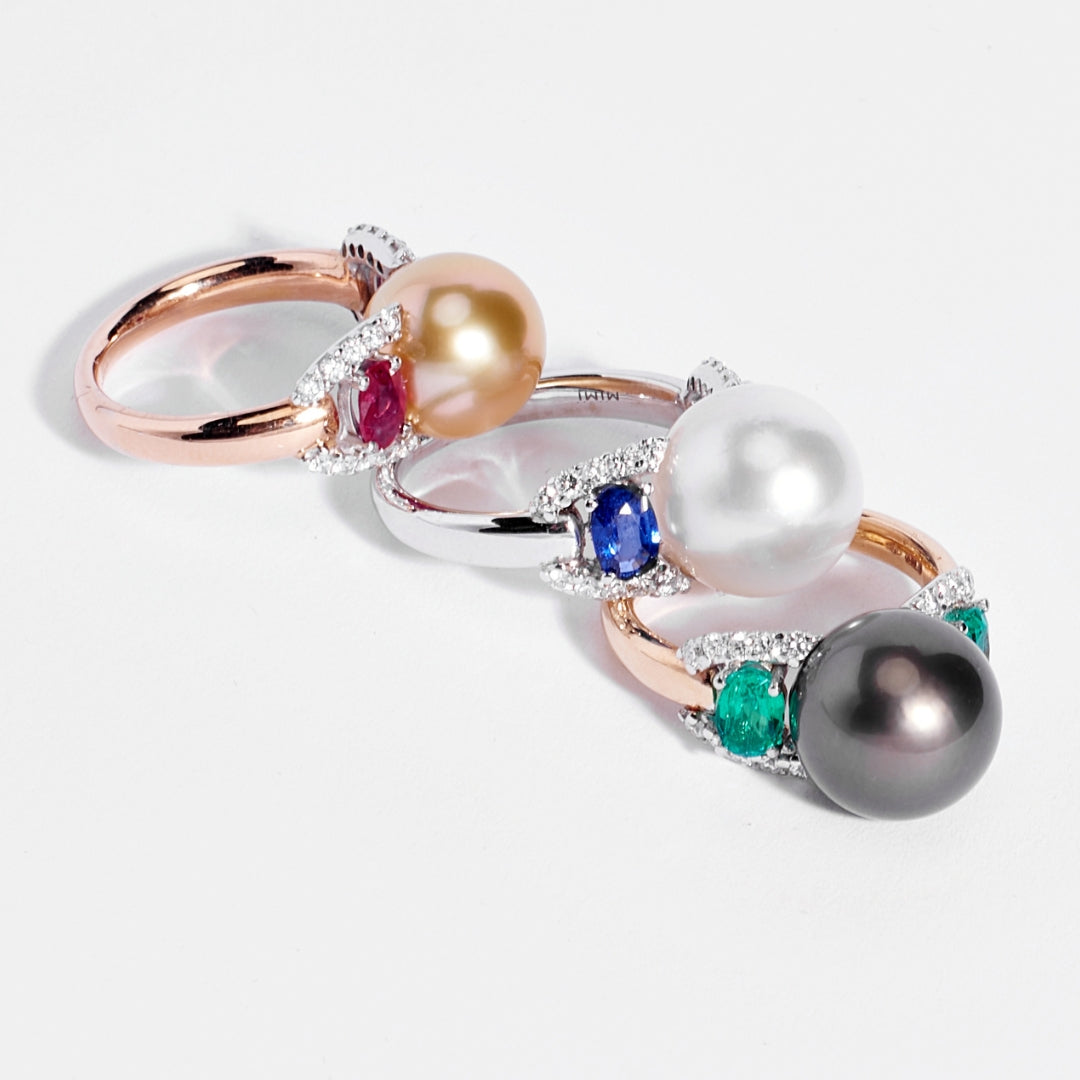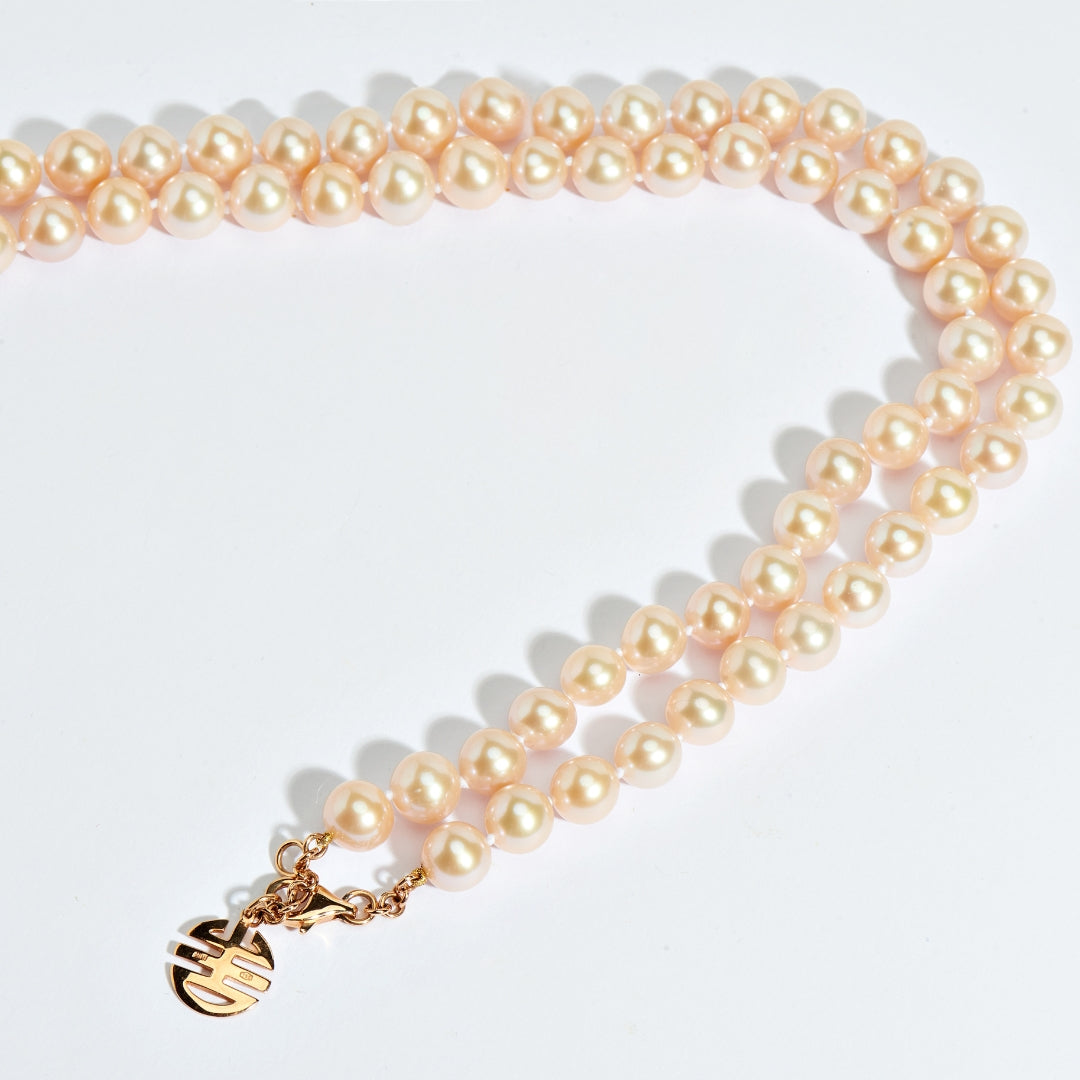THE WORLD OF PEARLS
A pearl is an organic gem naturally created by a mollusk in response to the presence of a foreign body. Composed primarily of concentric layers of nacre, it is distinguished by its luminous sheen, known as the "orient."
A cultured pearl is created by inserting a small nucleus into the oyster, which responds by enveloping it in nacre. This process takes years and requires carefully controlled environmental conditions.
Natural pearls are formed without human intervention and are now exceedingly rare. Cultured pearls, on the other hand, are created through a technique of natural stimulation in a controlled environment. MIMI works exclusively with cultured pearls of the highest quality.
MIMI selects Akoya, South Sea, Tahiti, and Freshwater pearls. Each variety is distinguished by unique characteristics of color, luster, size, and origin.
Akoya pearls are Japanese saltwater pearls, renowned for their luminous sheen, perfectly spherical shape, and delicate white or pinkish hues. They are the ideal choice for classic necklaces and elegant earrings.
South Sea pearls are among the largest and most coveted marine pearls in the world. Originating from Australia and Indonesia, they display natural white or golden hues and an unmistakable, silky luster.
Tahitian pearls originate from French Polynesia and are naturally black or grey, adorned with green, blue, or aubergine overtones. They are rare, elegant, and unmistakably distinctive.
Freshwater pearls are primarily cultivated in China. They offer a remarkable variety of colors and shapes, often with unique irregularities, and are prized for their exceptional versatility.
Orient is the iridescent sheen visible on the surface of the pearl. It is a hallmark of quality, determined by the transparency and overlapping of the nacre layers.
Lustre is one of the most important characteristics of a pearl, reflecting its ability to capture and mirror light on its surface. A high-quality pearl, such as those selected by MIMI, displays an intense and well-defined lustre, with crisp, deep reflections. This effect, also known as “orient,” is the result of the pearl’s layered structure and the purity of its nacre.
The quality of a pearl is assessed through six fundamental criteria that, together, determine its aesthetic and commercial value:
• Luster: This is the most important parameter. It measures how intensely and clearly light is reflected on the surface of the pearl. A high-quality pearl displays sharp, brilliant, and deep reflections, a sign of a compact and finely layered nacre.
• Surface: Imperfections are common in natural pearls, yet the cleaner the surface, the more precious the pearl. Minor irregularities do not diminish its value if the luster is exceptional.
• Shape: the perfectly spherical shape is the rarest and therefore the most valuable, yet baroque or oval forms, when well proportioned, can also possess remarkable intrinsic beauty.
• Color: it can range from white to pink, gold, grey, and black. There is no such thing as a “best” color; what is prized is the harmony of the tone and the natural quality of the luster. MIMI selects only untreated pearls, enhancing the authenticity of their natural hues.
• Size: Given equal quality, a larger pearl commands a higher value. Growth requires time, and significant dimensions are the result of an extended natural process.
• Pearl nacre thickness: determines the durability of the pearl and its ability to retain its luster over time. A thick layer of nacre is synonymous with superior quality.
At MIMI, each pearl is meticulously evaluated according to these criteria, guided by an expert eye and a precise philosophy: selecting only those specimens that embody natural elegance, harmonious balance, and genuine radiance.
Genuine pearls possess a subtly imperfect surface, a tangible weight, and profound luster. MIMI provides certification for every pearl used.
Pearls should be worn often, yet protected from perfumes and creams. After each use, gently cleanse them with a soft cloth and store them in their original case, separated from other jewellery.
No. Salt and chlorine irreparably damage the surface of pearls.
In a dry, cool, and dark place. Away from sources of heat, direct light, and chemical agents.
The rarest pearls in the world are Melo pearls and Conch pearls.
These are extraordinary gems, impossible to cultivate, that form naturally within highly specific mollusks and in extremely limited quantities. MIMI is among the very few brands worldwide capable of crafting jewelry with these exceptionally rare pearls: a savoir-faire that demands the highest technical expertise and specialized ateliers, able to handle such delicate and precious materials.
Melo pearls originate from the marine mollusk Melo melo, found in the waters of Southeast Asia. They contain no nacre, but instead reveal a naturally porcelain-like surface, with hues ranging from creamy to deep orange. Smooth, rare, and entirely natural, they embody an exclusive allure.
Conch pearls, on the other hand, are born from the Strombus gigas, a large Caribbean shell. They display delicate to intense shades of pink, with a silky surface and a distinctive 'flame' effect created by their unique fibrous structure. These pearls, too, cannot be cultured, and it is precisely their rarity—combined with the complexity of setting them—that makes them so extraordinary.






